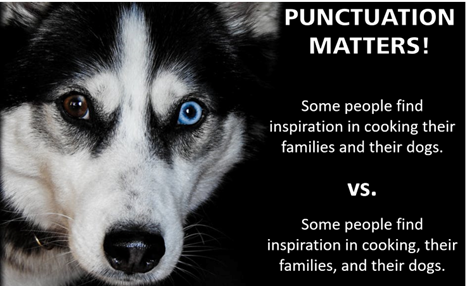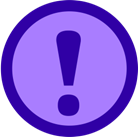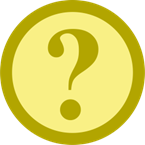Chapter 9.9 Punctuation

Maybe you have heard the story about how punctuation saves lives. Clearly, there is a difference between
Let’s eat, Grandma!
and
Let’s eat Grandma!
In addition to saving lives, using punctuation properly will help your writing be clean and clear and help you build your credibility as a writer.
The following sections will provide you with an overview of the basic rules regarding punctuation beyond just comma use and will give you a chance to practice using the information you have learned.
Apostrophes
Apostrophes are a tool for making English more streamlined. Instead of saying, “the book that belongs to Elizabeth,” you can say, “Elizabeth’s book.” Instead of saying, “I cannot come,” you can say, “I can’t come.” Although you could avoid using apostrophes, your writing will be more natural if you learn the rules for using possessives and contractions appropriately.
There are two reasons to use apostrophes:
- to show possession (ownership)
- for contractions (combining two words into one).
Possessives
The apostrophe is used to show possession or ownership.
Singular possessive
To make singular nouns possessive, add ’s (apostrophe + s) to show possession.
Examples
Example: Max’s dog means the dog belongs to Max (or, the dog of Max)
Example: my friend’s book means the book belongs to my friend (or, the book of my friend)
Example: The roof’s tiles need replacing before the next snowstorm. The tiles belong to the roof.
Plural possessive
To make plural nouns that do not end in s possessive, add ’s (apostrophe + s) to show possession.
Examples
Example: the children’s scary books means the scary books belong to the children
Example: the mice’s tiny tails means the tiny tails belong to the mice.
To make plural nouns that end in s possessive, add just the ’ (apostrophe) to show possession.
Examples
Example: my cats’ treasures means the treasures belong to the cats
Example: our zombie fortresses’ weaknesses means the weaknesses belong to the zombie fortresses
Contractions
A contraction is a shortened phrase to join a verb with “not” or to join a subject with a verb.
Verb with “not”:
are + not = aren’t
do + not = don’t
Subject with a verb:
would + have = would’ve
it + is = it’s
In all of these cases, the apostrophe stands in for the missing letters.
Some Common Errors
Now that we’ve learned about both contraction and possession, let’s take a look at some of the most common (or at least most called out) errors people make.
Its versus It’s
This rule also applies to your vs. you’re and their vs. they’re. The best way to use these correctly is to remember that possessive pronouns never have an apostrophe: if there’s an apostrophe with a pronoun, it’s a contraction, not a possessive.
Should’ve versus Should of
- Should of, would of, could of
- Should’ve, would’ve, could’ve
This mistake is due to the pronunciation. Out loud both of these phrases sound exactly the same. However, remember that the original phrase is should have, as in “I should have done that.” The phrase should of should never occur. Unfortunately, the only way to remember this is rote memorization (or perhaps a closer examination of the word of).
Exercise 9.9.1
Choose the word that uses an apostrophe correctly in the following sentences. Write the answer on a separate sheet of paper.
- I stayed up late at night watching the Sasquatch specials, determined that I would grow up and be the person to prove (its / it’s) existence.
- I spotted a (Sasquatch’s / Sasquatchs’) hut in the woods.
- I turned on my (cameras / camera’s) flash to get a good picture of the creature.
- However, as I approached, I realized it was my two (friend’s / friends’) camping site and (wasn’t / was’nt) a Sasquatch hut at all.
- I (should’ve / should of) never wasted so much time and money.
Exclamation point (or exclamation mark)

The exclamation point is a punctuation mark usually used after an interjection or exclamation to indicate strong feelings or high volume, and it often marks the end of a sentence. You’ve likely seen this overused on the internet:
!!!!!! I’m JUST SO!!!!!!
While this kind of statement is excessive, there are appropriate ways to use exclamation points. A sentence ending in an exclamation mark may be an exclamation (such as “Wow!” or “Boo!”), or an imperative (“Stop!”), or may indicate astonishment: “They were the footprints of a gigantic duck!” Informally, exclamation marks may be repeated for additional emphasis (“That’s great!!!”), but this practice is generally considered only acceptable in casual or informal writing, such as text messages or online communication with friends and family.
Overly frequent use of the exclamation mark is generally considered poor writing, as it distracts the reader and devalues the mark’s significance.
Question mark

Direct Questions
A question mark comes at the end of a question. A question is a request for information. The information requested should be provided in the form of an answer.
A rhetorical question is asked to make a point and does not expect an answer (often the answer is implied or obvious). Some questions are used principally as polite requests (e.g., “Would you pass the salt?”).
All of these questions can be categorized as direct questions, and all of these questions require a question mark at their ends.
Indirect Questions
Indirect questions can be used in many of the same ways as direct ones, but they often emphasize knowledge or lack of knowledge:
- I can’t guess how Tamika managed it.
- I wonder whether I looked that bad.
- Cecil asked where the reports were.
Such clauses correspond to direct questions, which are questions actually asked. The direct questions corresponding to the examples above are How did Tamika manage it? Did I look that bad? Where are the reports?
Notice how different word order is used in direct and indirect questions: in direct questions the verb usually comes before the subject, while indirect questions the verb appears second. Additionally, question marks should not be used at the end of indirect questions.
Quotation marks
Quotation marks (“…”) are used to mark dialogue, to indicate words that are borrowed, to emphasize certain details, and to help when giving credit for written works.
Using Quotation Marks to Signal Dialogue and Borrowed Words
Quotation marks are a key component of written dialogue. All words of a dialogue must be enclosed within quotation marks to indicate that these words are the exact words of the speaker.
- The complete quotation should have quotation marks around it.
- The end punctuation should be placed inside the quotation marks.
Example
“The one thing that doesn’t abide by majority rule is a person’s conscience,” Atticus said. (From To Kill a Mockingbird, by Harper Lee)
Using Quotation Marks to Enclose Titles of Short Works
Some examples of short works that should be included in quotation marks are articles in periodicals, book chapters or sections, essays, newspaper and magazine articles and reviews, short poems and stories, song titles, titles of television episodes, etc.
Italics indicate titles of full-length books and other lengthy, completed works (movies, albums, magazines, etc.).
Examples
Use quotation marks for short works: In an article, “A Child Shall Lead Them,” Michael Richardson suggests that Lee presents justice through the innocent eyes of a child in an effort to show its true form.
Use italics for full-length books: I first read To Kill a Mockingbird in eighth grade.
Exercise 9.9.2
On a separate sheet of paper, insert correct punctuation (exclamation points, question marks, and/or quotation marks) in the following sentences.
- Cesar Chavez once stated, You cannot uneducate a person who has learned to read.
- Don’t run with scissors
- I bought a copy of the cookbook titled The Good Food Book because I wanted to read the chapter called How to Eat More and Weigh Less.
- What’s that green stuff in your hair
- My favorite song by Taylor Swift is titled Anti-hero.
Semicolon
Like most punctuation marks, the semicolon (;) can be used in a variety of ways. The semicolon indicates a break in the flow of a sentence, but functions differently than a period or a comma. When you encounter a semicolon while reading aloud, this represents a good place to pause and take a breath.
Semicolons to Join Two Independent Clauses (create a compound sentence)
Use a semicolon to combine two closely related complete thoughts (independent clauses). Relying on a period to separate the related clauses into two shorter sentences could lead to choppy writing. Using a comma would create a comma splice.
- Choppy: Be sure to wear clean, well-pressed clothes to the interview. Appearances are important.
- Incorrect (comma splice): Be sure to wear clean, well-pressed clothes to the interview, appearances are important.
- Correct: Be sure to wear clean, well-pressed clothes to the interview; appearances are important.
In this case, writing the independent clauses as two sentences separated by a period is correct. However, using a semicolon to combine the clauses can make your writing more interesting by creating a variety of sentence lengths and structures while preserving the flow of ideas.
Semicolons to Join Items in a List
You can also use a semicolon to join items in a list when the items in the list already require commas. Semicolons help the reader distinguish between items in the list.
- Incorrect: The color combinations we can choose from are black, white, and grey, green, brown, and black, or red, green, and brown.
- Correct: The color combinations we can choose from are black, white, and grey; green, brown, and black; or red, green, and brown.
By using semicolons in this sentence, the reader can easily distinguish between the three sets of colors.
Colon
Colons to Introduce a List
Use a colon (:) to introduce lists, quotes, examples, and explanations. You can also use a colon after the greeting in business letters and memos.
Example
Example: The team will tour three states: New York, Pennsylvania, and Maryland.
Example: I have to take four classes this semester: Composition, Statistics, Ethics, and Italian.
Colons to Introduce a Quote
You can use a colon to introduce a quote.
Example
Example: Mark Twain said it best: “When in doubt, tell the truth.”
Colons to Introduce Examples or Explanations
Use a colon to introduce an example or to further explain an idea presented in the first part of a sentence. The first part of the sentence must always be an independent clause; that is, it must stand alone as a complete thought with a subject and verb. Do not use a colon after phrases like such as or for example.
- Incorrect: Our company offers many publishing services, such as: writing, editing, and reviewing.
- Correct: Our company offers many publishing services: writing, editing, and reviewing.
Exercise 9.9.3
On a separate sheet of paper, add a semicolon or a colon to the following sentences; you must choose which is most appropriate.
- Don’t give up you never know what tomorrow brings.
- Our records show that the patient was admitted on March 9, 2010 January 13, 2010 and November 16, 2009.
- Allow me to introduce myself I am the greatest ice-carver in the world.
- Where I come from there are three ways to get to the grocery store by car, by bus, and by foot.
- You should trust me I have done this before.
Hyphen
Hyphens (-) can be a little tricky, but they are important. For example, there is a world of difference between a dirty-movie theater and a dirty movie theater. You probably wouldn’t want to go to either one, but there is a big difference between the two.
Hyphens are tricky because location is also very important in determining whether or not you need to hyphenate words.
The rule is pretty clear, however. When you have two or more words that modify or describe a noun that follows, you should hyphenate those words. You should not hyphenate the same words if they come after the noun.
Example
Take a look at the following example where hyphenation errors exist in several places:
Incorrect: It was clear that, after his two dollar hair-cut, Bertram began suffering from low self esteem.
Correct: It was clear that, after his two-dollar haircut, Bertram began suffering from low self-esteem.
Dash
Dashes (—) separate emphasis-adding text from the rest of the words in a sentence. You can use one long dash to set apart text at the end of a sentence. You can use dashes before and after the text to set it apart in the middle of a sentence.
Here are some uses for dashes:
- Creating a sudden change in tone, thought, or ideas
- Example: We had predicted that the storm would come soon—but not this soon!
- To show emphasis
- Example: The book—if one can call it that—received mediocre reviews.
- Suggesting hesitation in dialogue
- Example: The old lady said to the man working the register, “I’ve got an extra nickel for the little girl’s candy—that is, if she’ll take it.”
- Providing a summary, an explanation, or an example
- Example: The book, To Kill a Mockingbird, is narrated by Scout Finch—a character who has much in common with the tomboy childhood of the author, Harper Lee.
Dashes may be created two ways, but they always use two hyphens.
Examples
Example: CPR sometimes—but not always—succeeds in reviving heart attack victims.
Example: CPR sometimes – but not always – succeeds in…
- Incorrect: CPR sometimes-but not always-succeeds in… (hyphens are NOT dashes)
Parentheses
Parentheses ( ) are punctuation marks that are always used in pairs and contain material that is secondary to the meaning of a sentence. Parentheses must never contain the subject or verb of a sentence. A sentence should make sense if you delete any text within parentheses and the parentheses.
Unlike dashes, parentheses de-emphasize ideas in a sentence.
Examples
Example: Attack of the Killer Potatoes has to be the worst movie I have seen (so far).
Example: Your spinach and garlic salad is one of the most delicious (and nutritious) foods I have ever tasted!
Exercise 9.9.4
On a separate sheet of paper, add the appropriate punctuation to the following sentences: hyphens, dashes, or parentheses.
- Marcia has to be careful around water because she is seriously accident prone.
- The best professor on campus in my opinion is Dr. Rodriguez.
- Abdul hopes to be self employed after college.
- If you forget our anniversary ever and I mean ever again, we’re getting a divorce!
- Dr. Seuss wrote many books Oh, the Places You’ll Go is my favorite.
Attributions
3.2: Semicolons and 3.3: Colons are shared under a CC BY-NC-SA 3.0 license and was authored, remixed, and/or curated by Anonymous via source content that was edited to the style and standards of the LibreTexts platform.
Punctuation and Hyphens are from Excelsior Online Writing Lab (OWL). This site is licensed under a Creative Commons Attribution-4.0 International License.
Apostrophes and End Punctuation Revision and Adaptation. Provided by: Lumen Learning. License: CC BY-NC-SA: Attribution-NonCommercial-ShareAlike
P5: Using Apostrophes, P6: Using Quotation Marks, and P9: Incorporating Dashes and Parentheses adapted from Chapter 18 “Punctuation” in Writer’s Handbook v 1.0 , used according to CC BY-NC-SA 3.0
Media Attributions
- Punctuation Matters Photo © Excelsior Online Writing Lab (OWL). is licensed under a CC BY (Attribution) license
- Exclamation point © dave808
- Question Mark
